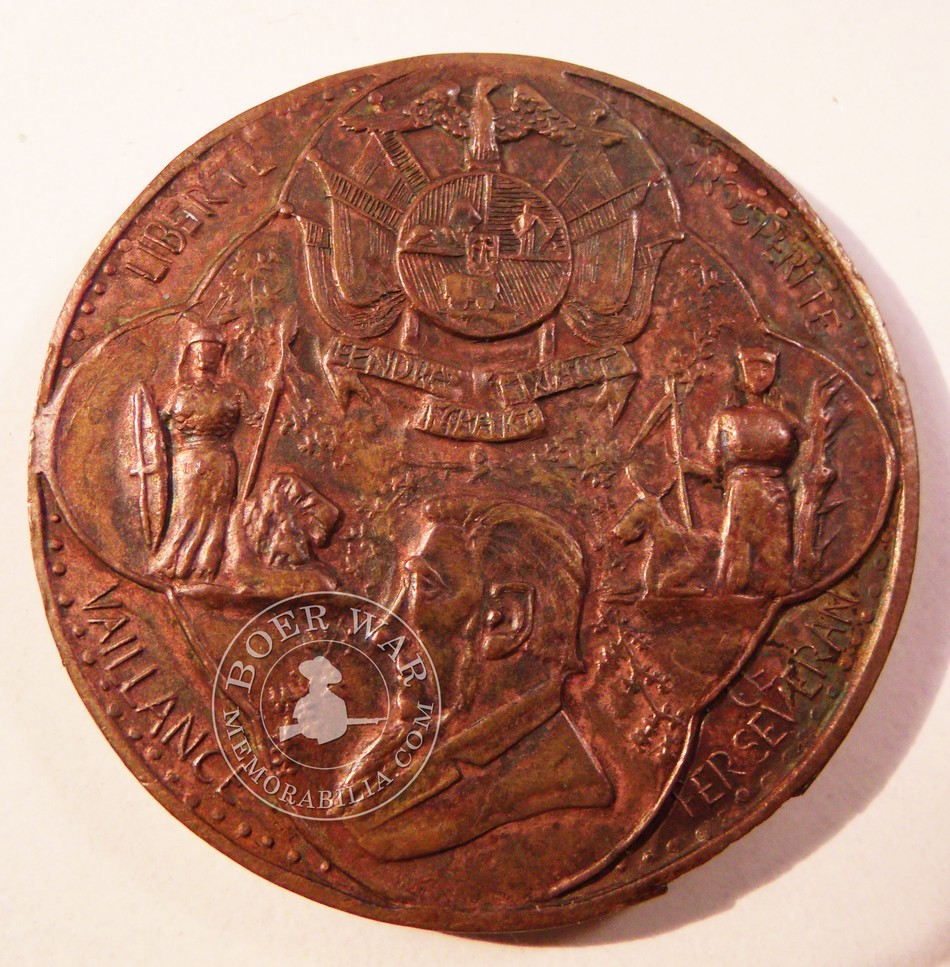|
View the embedded image gallery online at:
https://boerwarmemorabilia.com/index.php/memorabilia/medallions/item/146-boer-war-medallion#sigProIdc2fb1b0b33 |
Item Ref# MS7422
St Helena Boer POW Medallion Shell medals normally have a cardboard interior and are lightweight. Recently one of these medals was opened up and three steel discs were found to be inside. The weight of the outer casing was 17 gm and the 3 discs 11 gm.
The Island of St Helena St Helena, a small island about 1000 miles off the west coast of Africa, has a long history as a military prison. Napoleon Bonaparte was imprisoned there from 1815 until his death on the island in 1821. The Zulu chief, Dinizulu, son of Cetschwayo, was found guilty of treason for resisting the annexation of Zululand and imprisoned there between 1890 and 1897. |

Sir Bartle Frere - Which of the Four?
During our stay at Cape Town, a member of the Upper House came to Joubert and me to invite us to pay a visit to Sir Bartle Frere. We refused; but, when the invitation was repeated, and it was added that Sir Bartle wished to speak to us privately, I said:
"I will come, if you can tell me which Sir Bartle Frere it is that wishes to see us; for I know four of them. The first came to us at Kleinfontein and assured us that he had not come with the sword, but as a messenger of peace. But, later on, I read in an English Blue Book that, on the same day, a Sir Bartle Frere, the second, therefore, had written to the British Government, ‘If only I had had enough guns and men, I would soon have dispersed the rebels.' I made the acquaintance of the third Sir Bartle Frere through his answer to our petition for the repeal of the annexation: he then said that he had informed the British Government that he had met some five thousand of the best Boers at Kleinfontein and that he recommended their petition to the Government's earnest consideration. Afterwards, I saw in the English Blue Book that, on the same day, a Sir Bartle Frere, obviously a fourth, had informed the British Government that he had met only a handful of rebels. Now these four cannot possibly be one and the same man; if, therefore, you can tell me which of the four Sir Bartles wishes to see us, we will think about it."
It is needless to add that Sir Bartle Frere's emissary was unable to answer the question and returned with his mission unfulfilled.
Source: Paul Kruger - His Memoirs
| Scripture |
|
The fear of the LORD is a fountain of life, that one may turn away from the snares of death. Proverbs 14:27 |

